Student Blog

Happy Veterans Day! ⟩
November 15, 2016, by JRoe
Getting Involved What are OS/OT?
This past Friday, I volunteered at the USC Veterans Day Appreciation Reception hosted by our division on UPC in Town and Gown! It was a great event and a wonderful opportunity to say thank you for all of the work our service men and women do for our country every day. The guest speaker was Dr. Jennifer Hermanson who is an OT and a veteran herself. Here at the Chan Division, we feel a strong connection to our veterans as the profession bloomed during World War II when so many hospitals needed occupational therapists to help in the war effort. Still today, many OTs work with veterans in a variety of settings. We cannot thank them enough!
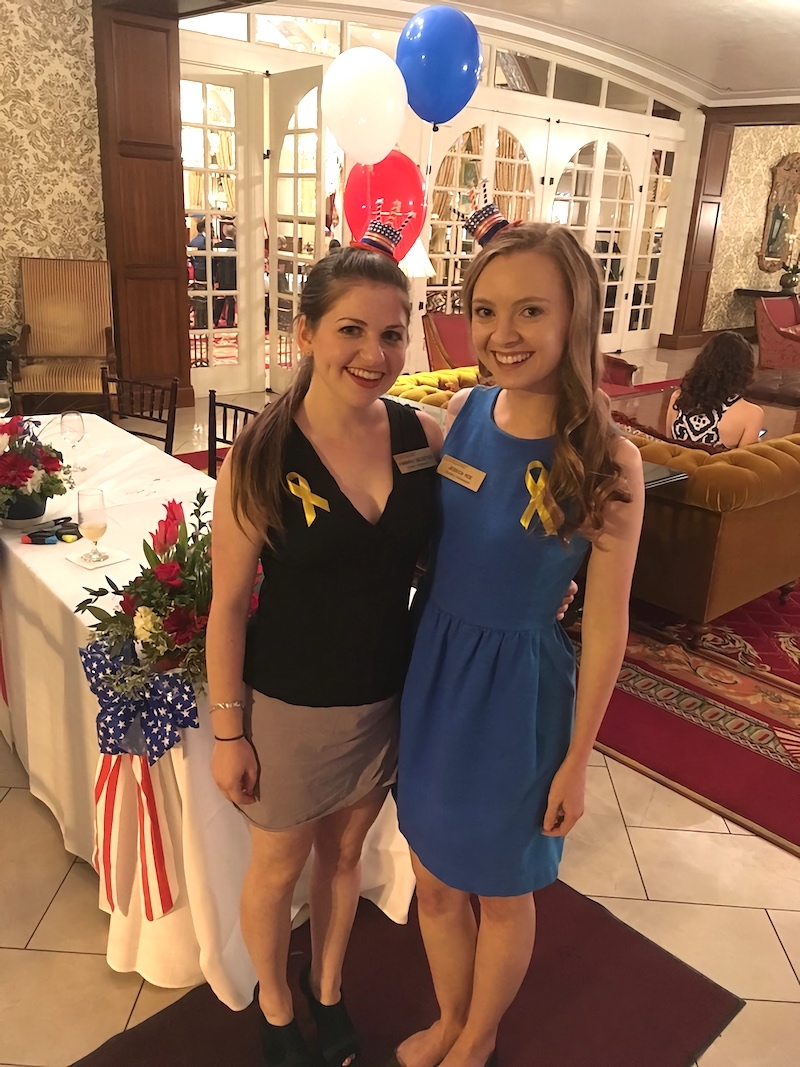
Kimmy and me with our festive tiny hats!
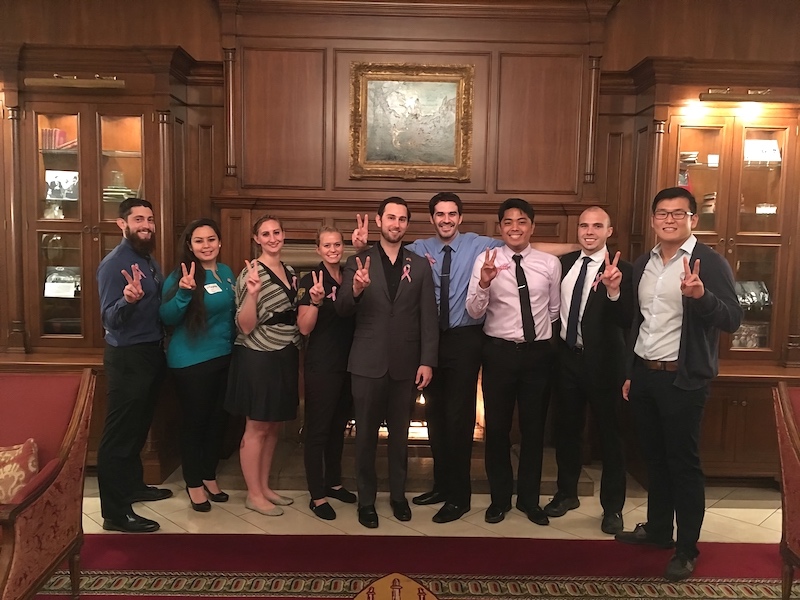
Fight on! from our veterans in attendance!
⋯
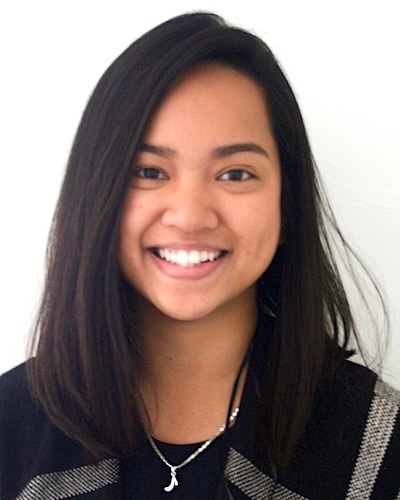
Thanksgiving Potluck 2016 ⟩
November 14, 2016, by Raisa
Community International Living in LA
Can you believe that we only have about two more months to go before 2016 ends?! That also means that the fall semester ends in around 5 weeks! Yikes!
So November is here! Time to enjoy the cooling weather and fun fall activities. One notable fall event that should not be missed is Thanksgiving. Thanksgiving is a traditional American holiday that is usually celebrated on the fourth thursday of November. However, thanksgiving came early for us this year. The MA-1 students were able to celebrate together on the beach, in true California fashion, all thanks to the efforts of Global Initiatives and Dr. Erna Blanche. The day was filled with fun, sand, waves and lots of food. Traditionally Thanksgiving would be celebrated with a whole oven roasted turkey, but we decided to take a trip around the world. Since it was a potluck, the class each shared a dish from their country. We had dishes from India, Taiwan, Philippines, Korea, Scotland, Italy and America, our bellies were stuffed! After the festivities, and a nice game of charades we headed out to the beach to watch the sunset. Needless to say it was beautiful. The sound of the waves crashing, the colors of the sun setting and the changing sky were magical. It was truly a beautiful end to such a lovely day.
On behalf of the MA-1 class I would like to extend our gratitude to Global Initiatives and Dr. Erna Blanche for hosting and coordinating this thanksgiving potluck for the class. It was a lovely day, and great way to get to know everyone through their food as well as culture.
Here are some pictures from our trip (all photos used with permission from owners, Arielle Villanueva and Kathryna Gomez).
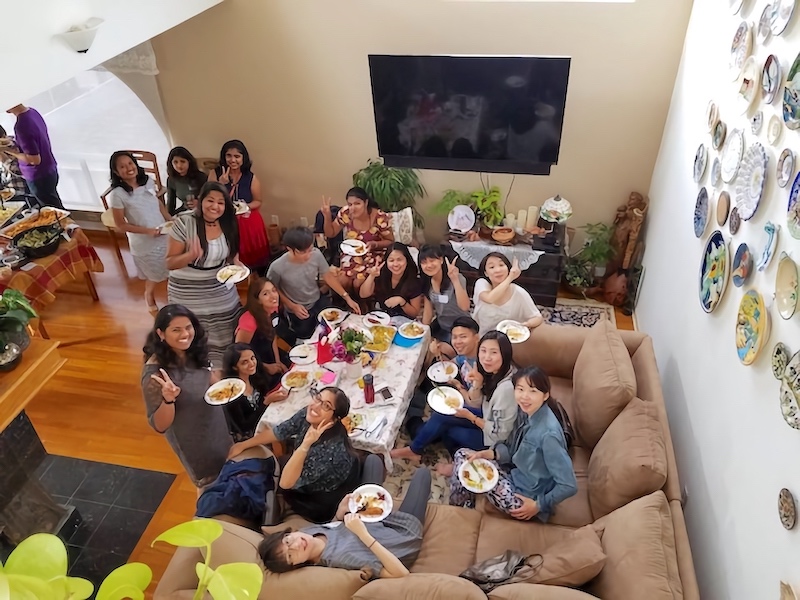
MA-1s with big smiles and full plates!
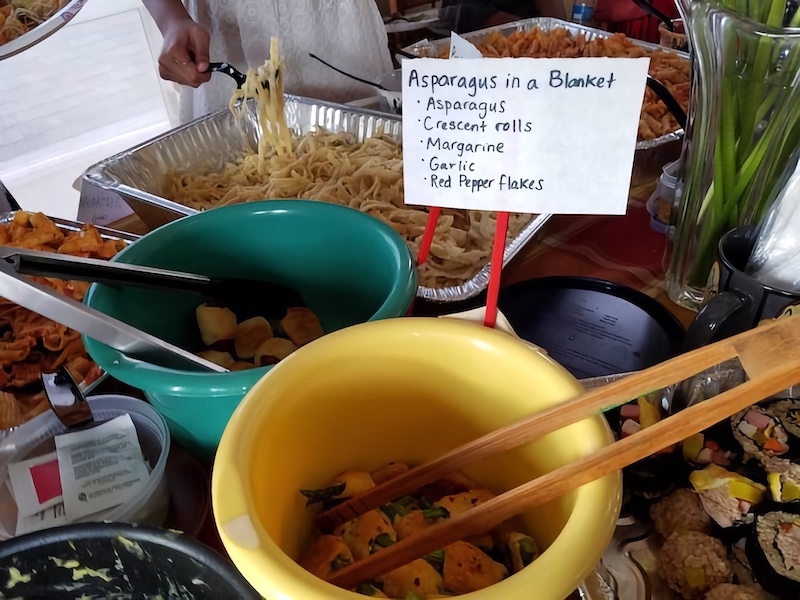
Asparagus in a blanket

Korean Kimbob

Korean Kimchi Fried Rice
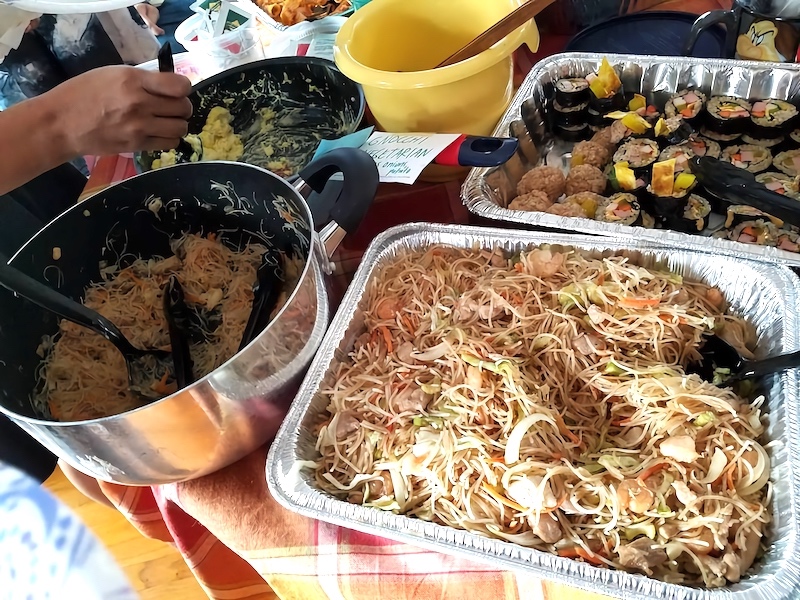
Both are fried rice noodles, the left is a Taiwanese dish while the one on the right is a Filipino dish. Shared food culture!
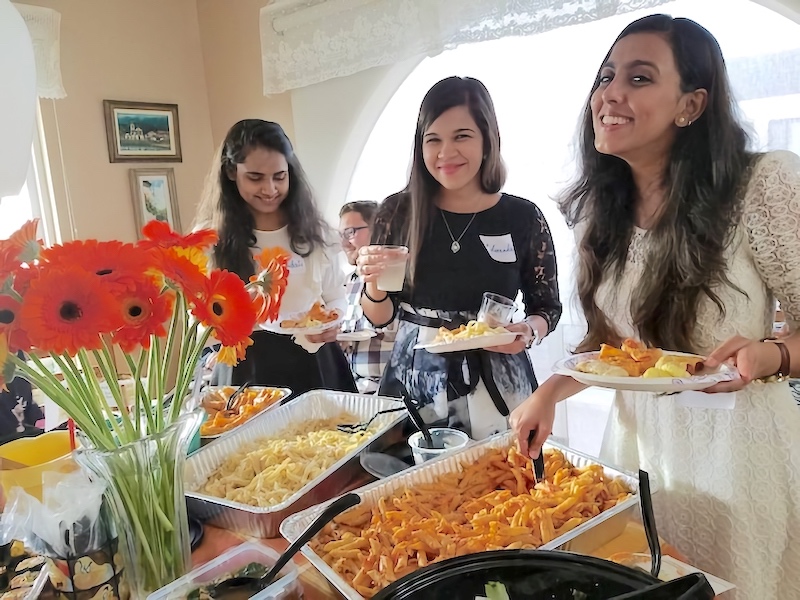
Help yourselves

Eton Mess, a lovely dessert from Britain

Mung Bean, a Taiwanese Dessert
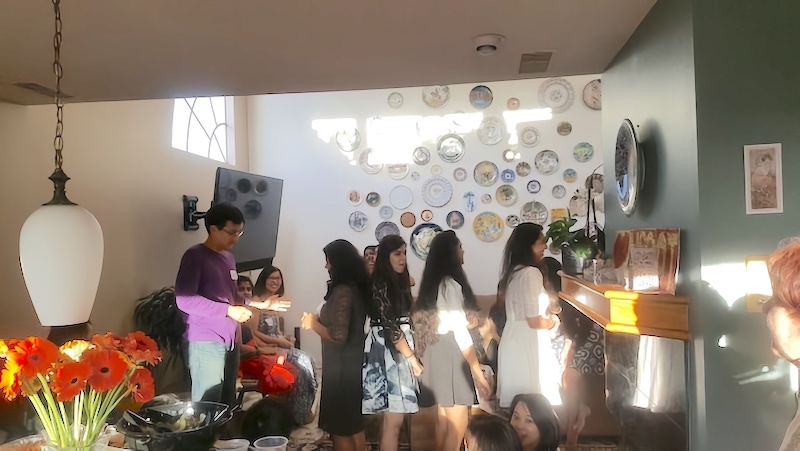
Telephone charades!

Selfie on the beach!


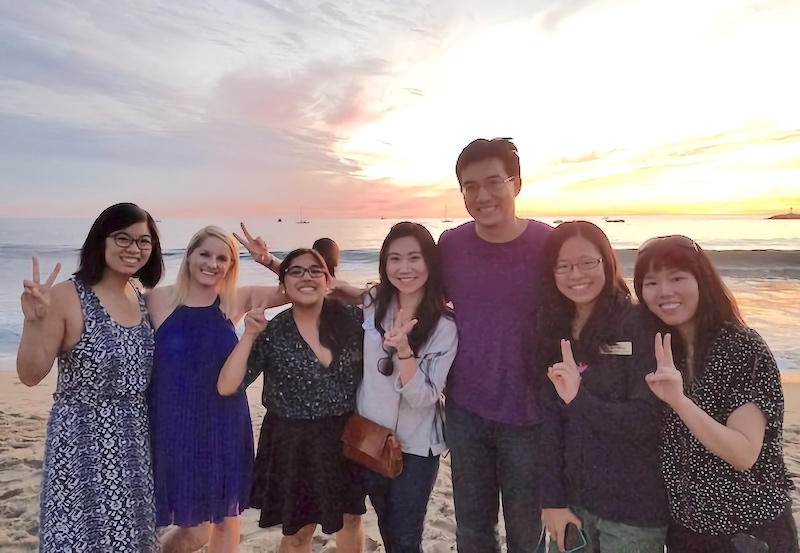
A big thank you to our hosts and event coordinators

Beautiful sunset
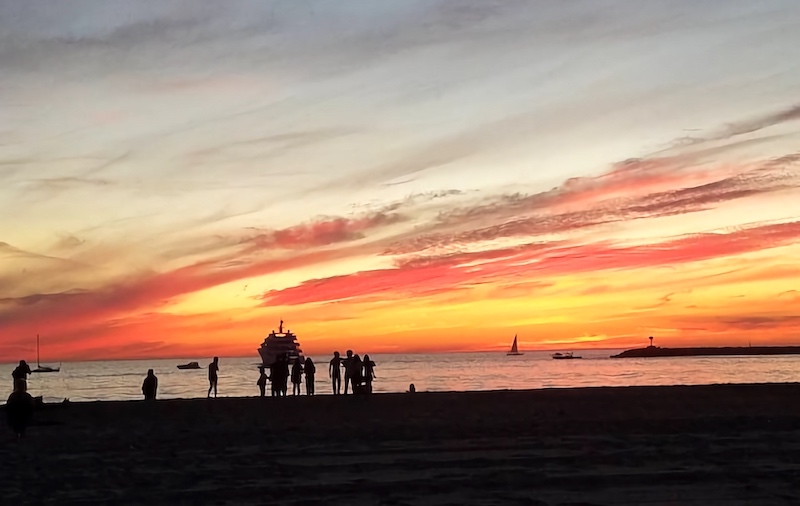
Look at those colors
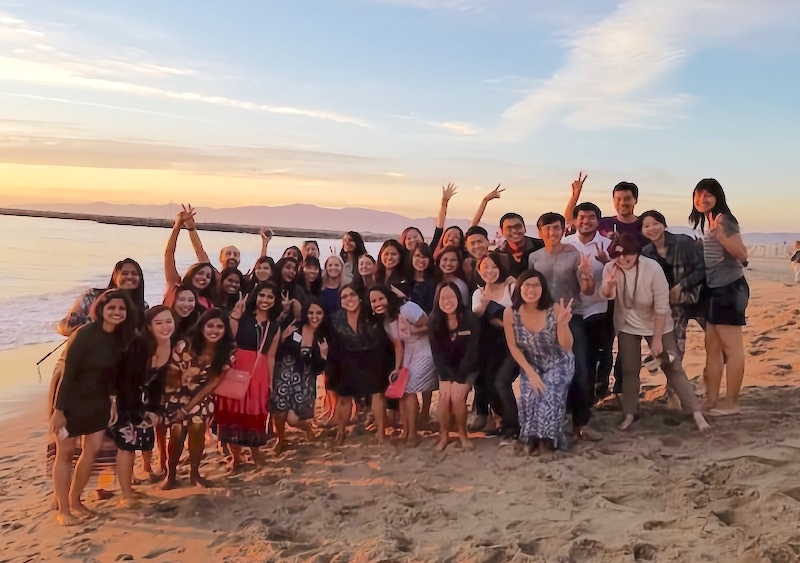
Happy Thanksgiving from the MA-1 batch of 2017
⋯
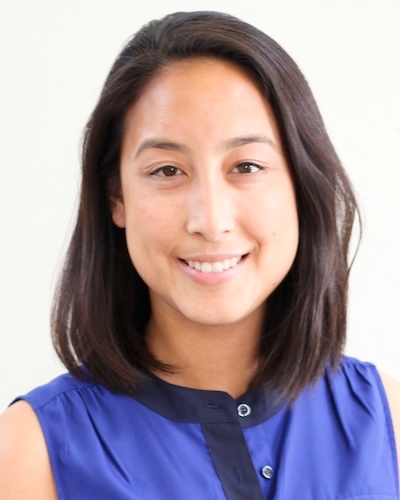
Cardboard Creativity ⟩
November 14, 2016, by Jessica
Hello again!
As you may have noticed from my past few posts about the pediatrics course, it is very hand-on and interactive. Each week our professors try to make the content come to life for us, so it really makes the material stick. This past week, we focused on learning about adaptive seating and mobility devices (i.e., walkers, wheelchairs, scooters, etc.) especially built for children with disabilities. As you may have predicted, customized adaptive seating and mobility devices are REALLY expensive, and children often quickly grow out of their devices. What’s amazing is that there are organizations out there that specialize in building adaptive devices out of cardboard, since it is both cost-effective and customizable. I know what you’re thinking — cardboard, really? It sounds like it would be flimsy, but these professionals have found ways to reinforce the cardboard so it is sturdy and durable. Check out Adaptive Design Association, if you’re interested in learning more about this! They have some cool videos in their learning library for each step they take to make customized equipment with cardboard.
In the spirit of creativity (and competition), our professor asked us to choose any piece of equipment in the classroom and adapt it for a child with disabilities — using cardboard. After building it, we had to “sell it” by presenting an infomercial. These infomercials were hilarious, to say the least. Here’s a photo of my team’s adaptive design — we decided to adapt a scooter board by adding a cardboard back and strap in front for trunk support. Since this is for a child, we decided to add some fun decorations to make it look like a submarine, aka the “USS Chan.”

Yours for a low, low price of $19.99. Some assembly is required.
⋯

Feed Me! ⟩
November 7, 2016, by Jessica
This past week in pediatrics, we discussed OT’s role in feeding intervention. I knew OTs were involved in feeding, however I didn’t realize how common it is for OTs to address feeding in all types of pediatric settings — hospital, clinics, schools, etc. This can truly be a specialty area of practice, and you can get Advanced Practice in swallowing and feeding in the state of CA. In fact, one of our elective courses, OT 575 Dysphagia Across the Lifespan, counts for 24 of the 45 recommended hours of continuing education to obtain this advanced practice certification!
In lab, we were asked to practice feeding one another these kid-friendly foods, and analyze the different motor movements we were using while eating these foods of various textures. Also, it was a good opportunity to try baby food for the first time. Figured it might be a good idea to try something I would be feeding to someone else. What I learned: baby food takes like cold soup.
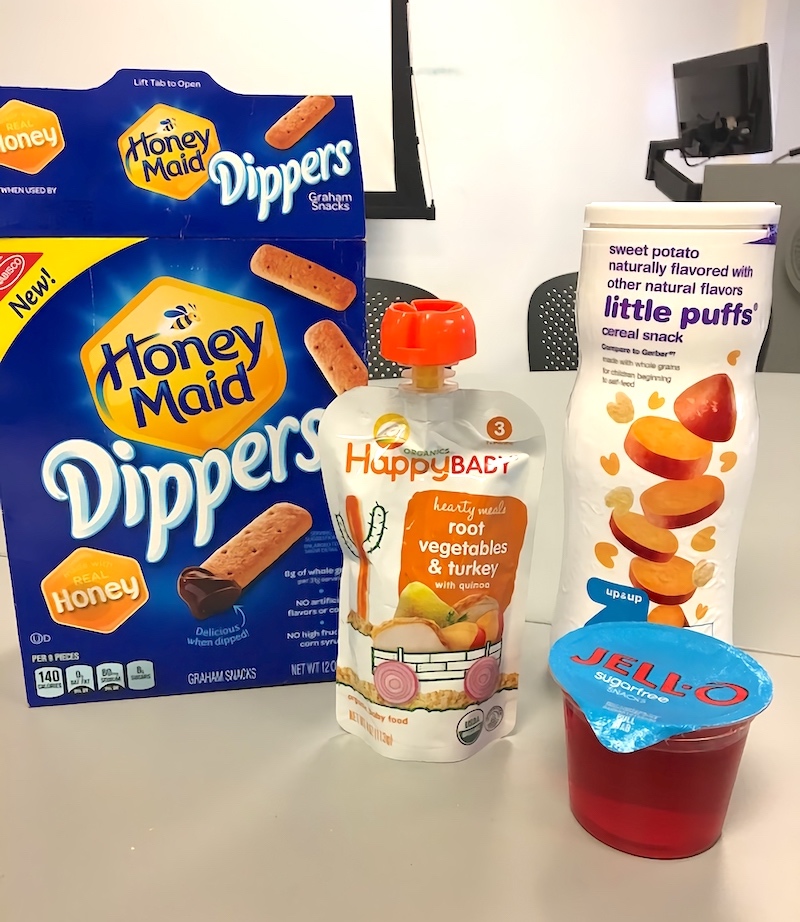
Kid-friendly foods
Trying new foods and going out to eat with friends and family is one of my favorite occupations. Food has always been a very communal experience for me. Growing up, my family would always eat our meals together around the table, and family get-togethers would always revolve around food. Nowadays, meal times are opportunities to reflect on the day with my fiancé or to reunite and connect with old friends. I love going out to eat at new restaurants to try food from different cultures. As a typically-developing human being who has never had issues with feeding or meal times, I take for granted that it is not always this easy for everyone.
This is where OTs come in — we can help children who have difficulties with feeding so that they can participate during family mealtimes. Whether it’s working on oral motor skills or getting children to eat a greater variety of foods, we have a pivotal role in helping families make mealtime a little more enjoyable.
⋯

Capturing Memories ⟩
November 4, 2016, by Alyssa
As an occupational therapy student, life is surely eventful! I find that my days are always spent socializing with others, whether it’s in the classroom with my professors, grabbing a coffee with my OT friends, working in the office with the student ambassadors, or eating dinner with my family. One of my favorite occupations, in addition to spending time with others, is to capture fun memories by taking photos! I take photos because I like to smile and share these memories with others. Here is a video of some of my memories that have been captured thus far this fall semester! Fight on!
⋯





